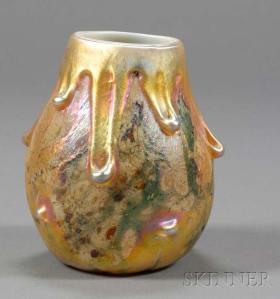I buy many items at auction. So does that mean you should too? The answer most probably is no. And here’s why.
Caveat emptor, let the buyer beware, is the guiding principle when buying at most auctions. (There are exceptions that I will address in an upcoming post.) That means that after the item is sold, you are the owner, and you have no recourse against the auction house should there be any problem whatsoever. Nobody is forcing you to raise your hand at the auction, so you are responsible for your actions. Everyone wants a bargain, so armed with a little bit of knowledge, many people are willing to try their hand at the auction game. This is the perfect example of “A little bit of knowledge is a dangerous thing”. The problem is that auctions can be like three-card Monte. What you see is not necessarily what you get.
I do many appraisals for individuals and I can usually tell immediately if the collector has mostly bought at auction. I recently did an appraisal for a Tiffany collector and I knew right away that he was an auction buyer. He had an inferior collection of lots of items, none particularly good. It was a collection of stuff, mainly just bits and pieces, with several reproductions thrown in. Another time an auctioneer called me to authenticate a collection of lamps that were consigned to him. I viewed the collection and told him not to sell the collection, as most all of the lamps were reproductions. The collector had gotten stuck at auction time after time.
So why do I caution novices from buying at auction? First and most obvious is the problem of reproductions. There are many good reproductions for sale that frequently require an expert to differentiate them from the real McCoy. Some auctioneers are unscrupulous and intentionally mix in these reproductions with good items. Others mix in reproductions because they don’t have an expert on staff who can tell the difference. Unwitting buyers come to the auction and pay the same for these reproductions as for authentic antiques. In most cases, there is no recourse. If you don’t know enough to tell the difference, you shouldn’t bid. I’ve seen it time and time again. A collector comes to me to sell their collection or have it appraised. Mixed in with the good items are frequently a few that are repros, bought at auction at the same prices as for authentic items. Money down the drain. And here’s the perfect example.

Skinner's auction, lot 115, 6/27/09
Tomorrow, more caution about buying at auction.
I will be writing a thorough explanation of buying and selling at auction. It will available at a nominal price. I know all of the pitfalls and how to avoid them. This will be very valuable information from a seasoned insider.
